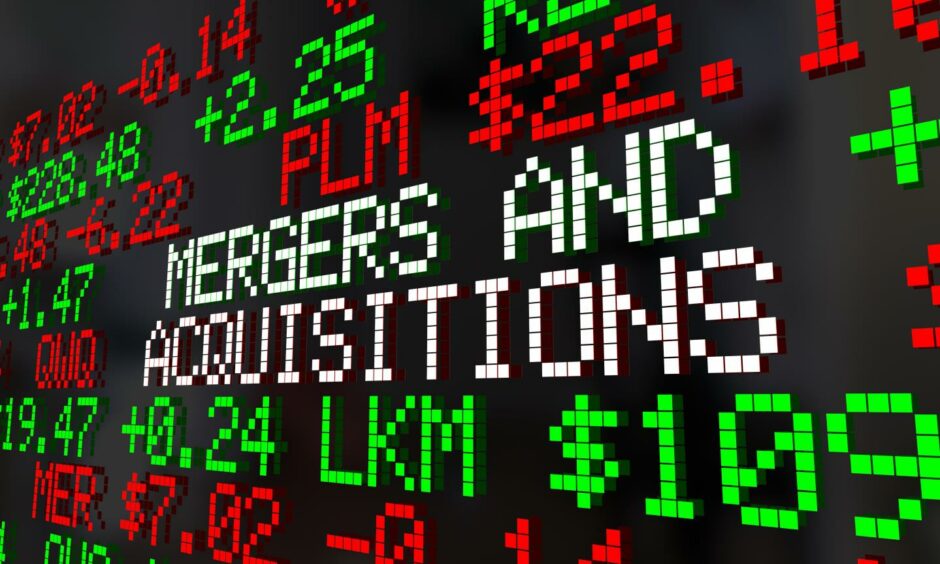US investment bank Morgan Stanley has said 2021 was a record year for global mergers and acquisitions (M&A), with the total value of deals worth more than £3.7 trillion.
AT&T’s £31.81 billion deal to merge its media businesses with Discovery was among the biggest transactions of last year.
Others included the £25.15bn leveraged buyout of Medline Industries and Canadian Pacific Railway’s £22.93bn takeover of Kansas City Southern.
In addition, there were the break-ups of US corporate behemoths General Electric and Johnson & Johnson.
Last year is reported to have eclipsed prior records and marked a remarkable rebound from 2020, despite lingering uncertainty from Covid-19.
Corporates have pursued transformative mergers and acquisitions (M&A) to accelerate expansion.
Sitting on a record £2.15tn of available capital, private equity sponsors are said to have been transacting at an unprecedented pace.
High equity valuations, particularly in the US, and low interest rates contributed to the record M&A figures.
According to Rob Kindler, global head of M&A at Morgan Stanley, the environment remains very good for M&A in 2022.
He added: “While it may not be another record year, all the key elements that made the 2021 M&A market so strong are largely in place.”
Morgan Stanley highlighted a variety of key factors in the market:
Strategic M&A
The investment bank said corporates exhibited a growing appetite for transformative M&A last year.
Corporate activity was broad across sectors, with companies using M&A to add scale and new capabilities, as well as to access new markets.
Morgan Stanley said corporates would this year need to focus on resolving the challenges of supply-chain disruptions, labour shortages, Covid-19 and cost inflation.
Looking beyond these challenges, however, the outlook for global economic growth for the next two years is robust, it added.
Confident in the longer-term business fundamentals, corporates will continue using M&A to accelerate the execution of their strategic priorities, the investment bank said.
One such strategic priority highlighted by Covid is the increased omnipresence of technology in e-commerce and logistics, content delivery and consumer interface, business infrastructure and other areas.
Tom Miles, co-head of Americas M&A, Morgan Stanley, said: “Corporates across all sectors – and especially in the industrial and consumer industries – will accelerate their digital transformations through M&A in order to enable faster growth.”
Deal-making may prove less robust in sectors still recovering from the pandemic, including travel, leisure and aerospace.
Brian Healy, also co-head of Americas M&A, at Morgan Stanley, said: “Once these industries have a clear visibility to the other side of Covid, M&A should bounce back aggressively, though that may be closer to 2023.”
Divestitures and spin-offs
With 2021’s favourable capital markets and global growth environment, some companies chose to announce separation and asset divestitures to bring greater strategic clarity to the core businesses.
This is a trend expected to continue in 2022 as management teams maintain a disciplined approach to shareholder value creation.
In addition, as sustainable investing interest grows, an uptick in M&A related to environmental, social and governance (ESG) strategies could emerge in sectors where there are actionable assets for divestiture or acquisition.
Mr Miles said: “A manifestation of that could be in the energy and natural resources sectors, where an increased ESG focus by the broader investor community could lead to asset-portfolio rebalancing to improve a company’s environmental footprint.”
Activity in regions outside of the US/pick-up in cross-border M&A
The rapid US economic recovery contributed to record-breaking transaction activity in the area last year.
As global economies continue to improve and the effects of Covid subside, regions outside the US could also experience heightened M&A activity, even from strong 2021 levels.
Colm Donlon, head of Europe, Middle East and Africa M&A, Morgan Stanley, said: “In Europe, the Middle East and Africa, continued GDP (gross domestic product) growth and conducive capital markets should support another strong M&A year.”
Staying power of SPACs
Special purpose acquisition company (SPAC) mergers had a banner year in 2021, accounting for about 20% of US M&A volume.
As the market evolved, activity was more muted toward the second half of the year.
Looking ahead, SPAC activity should have staying power, though it’s unlikely to repeat 2021 levels, according to Kristin Zimmerman-Sorio, head of SPAC M&A, Morgan Stanley.
Ms Zimmerman-Sorio added: “As it stands, there is still about $160 billion (£118.38bn) of capital across more than 550 SPACs waiting to be deployed within a limited timeframe.”
Your Money: Taking meaningful steps towards sustainable investing
Record year for RSM’s offices in Aberdeen, Lerwick, Edinburgh and Glasgow
What’s in store for M&A after record-breaking year?
The latest research on completed M&A deals from Willis Towers Watson (WTW) also shows global activity achieved new highs in 2021.
The number of deals valued at more than £73.99 million reached 1,047, a significant increase over the previous year (674) and the highest annual volume since WTW’s analysis began in 2008.
Deal volume in North America remained consistently strong during 2021, with acquirers closing 614 transactions.
This was nearly double the 325 achieved in the previous 12 months.
European acquirers closed 199 deals – up a quarter on the 155 seen in the prior 12 months.
Duncan Smithson, senior director, HR mergers and acquisitions, North America, WTW, said: “The M&A boom in 2021 looks set to continue, fuelled by abundant investment capital, strong equity markets and cheap debt, and companies under pressure to make their businesses greener by hunting for targets with the right climate credentials.
“M&A data from North America also highlights the impact that historically high asset valuations, pushed up by competition and increasing complexity, can have on deal performance.
“The question is whether prices being paid now will continue to make sense over time.”
WTW has shared some top M&A trends for the year ahead:
- ESG goals drive M&A boom – themes such as decarbonisation will drive deals, with additional opportunities for new ventures stemming from climate risk mitigation innovation.
- Digital transformation accelerates – the so-called “great resignation”, which has forced companies to re-evaluate how to retain and acquire new talent in a scarce labour market, will continue to be a factor with companies under pressure to acquire high-end talent in fields such as cyber security and software engineering.
- Supply chain driving M&A – companies will aim to achieve more self-sufficiency in their products and services due to the immense strain exerted on global supply chains by the pandemic, social unrest, cyber attacks and extreme weather events.
- M&A cycles are changing – instead of declining in line with economic downturns, the unprecedented amount and mix of capital for deals from private-equity firms and other investors indicates an increased capability and desire to do deals through downturns.
- Activity is strong, but with caveats – WTW said most deal-makers will be aiming to match or exceed their 2021 deal total, but they will also be concerned that inflation pressures and ESG issues could have a negative impact on deal performance. Companies will also continue to face geopolitical tensions.
Mr Smithson said deals this year would remain susceptible to increasing challenges.
He added: “High valuations, deal complexity, competition for high-quality assets and pandemic-fuelled supply chain disruption will continue to have knock-on consequences for deal-makers.”



